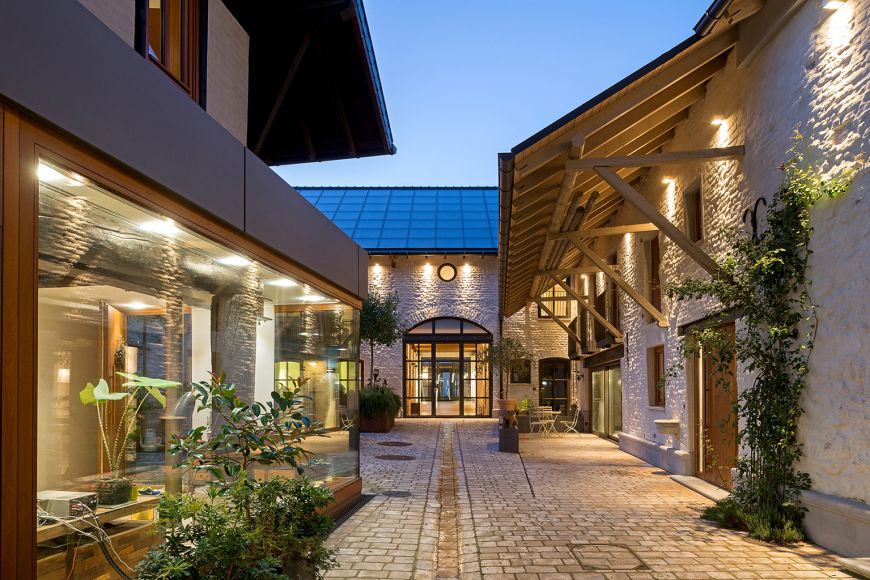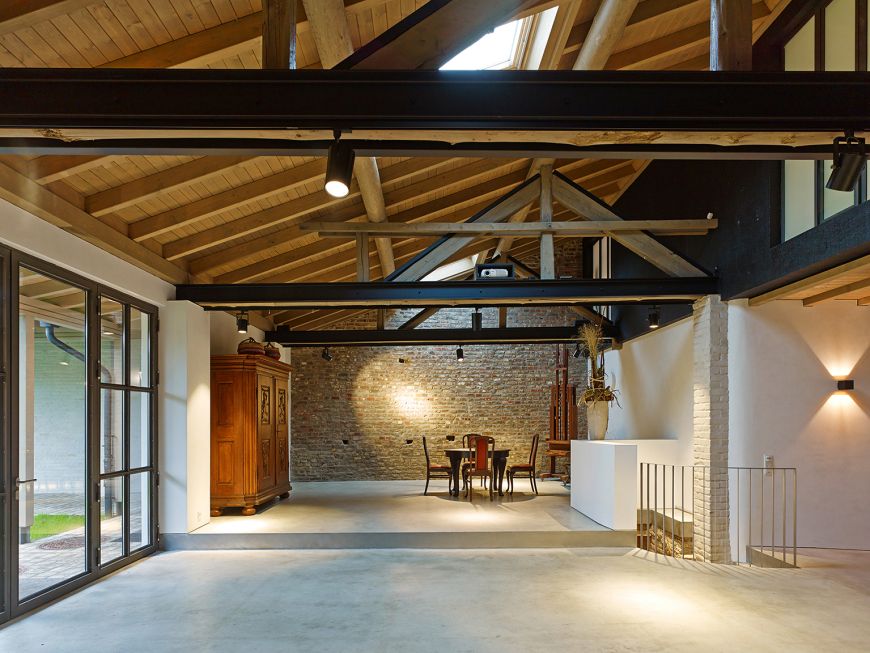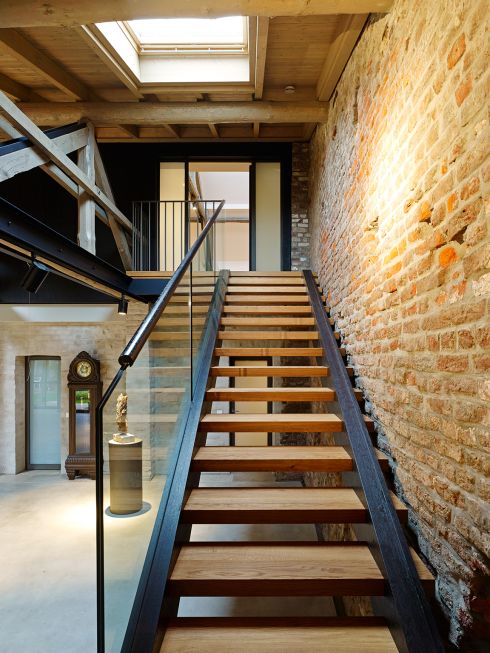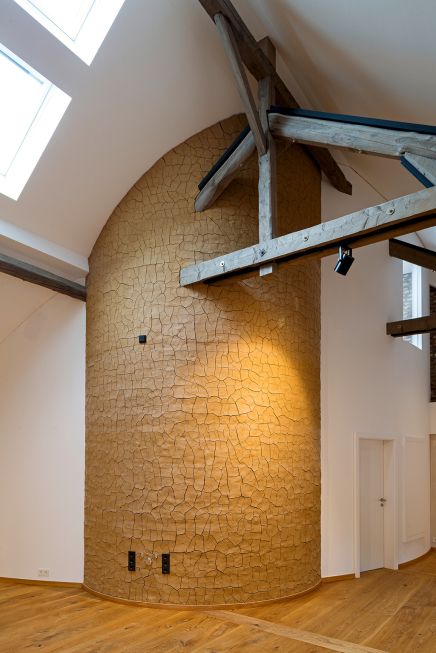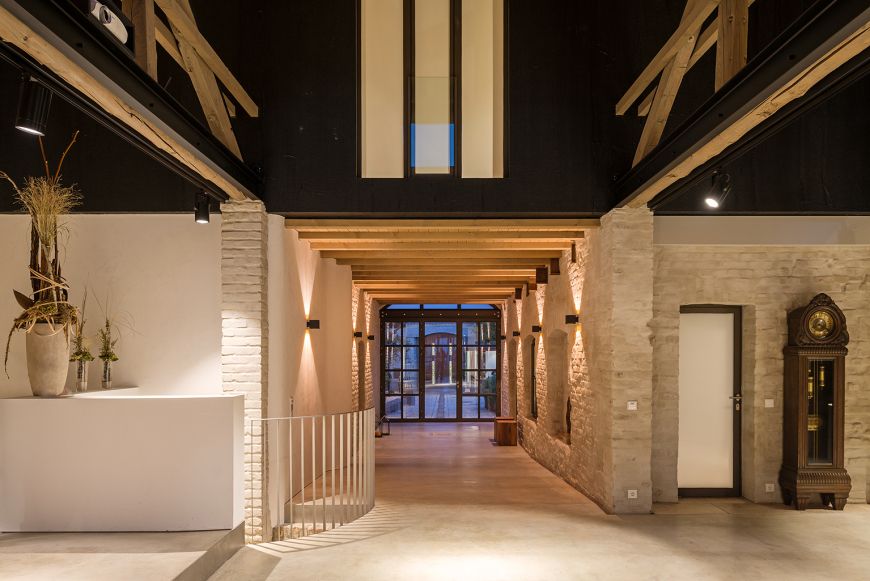The four-sided yard “wild 16” in Aachen was reconstructed under the keeping of the specially characters. The old Gutshof blaze now with the solar concept 50+ in a modern solar house. Cellular glass stand out not only for his ecological pros, but also take off with his variants to other insulation material.
The Hofer architect Uwe Fickenscher uses just this variety and insert the cellular glass products of the company GLAPOR in new building as well as in buildings, which are already exist. “GLAPOR-cellular glass material, which has got a ecological valuable warmth insulation material, is very important in the reconstruction and in new buildings. I don´t know, how we act without this the years before”, reported Uwe Fickenscher, architect BDB, energy consultant and urban planner BYAK. Also the large reconstruction and energy reconstruction of the old Gutshofes to the solar house was consequently a ecological aware, protection of the ressources as well as sustainability as a central point.
Conservative handling with historical built volumes
In the countrified pressed Aachener surroundings blaze an old farmstead in a “new, old” gloss. “Renewal happened out of the inside” – exact this symbolic follows the office fickenscher architecture+ in the project discribing as well as in the following restoration of the old four-sided yard. An important and clear visible innovation applys to the implementation of the solar heat saving-concepts. Therefore found a solar energy saving his place in the centrum of a building and renewed the heat supply also “out of the inside”. The architect watched especially at the complete restoration of the centuries-old four-sided yard to save the old and multitudinous details as a quite witness of the time inside of the renovative object. “The architectural concept provide to save the inventory – how ruinous he will ever be – and not to access so much in the structure of the farm”, so Fickenscher to the beginning of the works.
The room layout conserved in a lot of parts. Some partitions, floor constructions and cravel spaces to the roof were removed, in return were used thermal insulated and damp insolated ground floor constructions. To save the character of the building as soon as to satisfy the right to sustainability, stand on one hand the agenda of recycling of old buildings volumes and integration of just this in the group of buildings and on the other hand the use of nature building material.
Cellular glass-insulation and innovative heatconcept
Just in the sector of insulation used the architect ecological material, to make in the old mansory a timely and comfortable living possible. Not only the ecological quality played a pivotal role, but also the technical significance at this building project after the solar house concept. The solar house concept plans a vast heating system of the building with solar heat. While at the new building area in Germany aready over 1.200 houses offer a heat insulation after the criterions of the solar house institute, is the use of the season warmth saving in old-building renovation still rarely so far. The builder aspire to an old farm stead the implementation of a solar house concept 50+. In succession was installed on the south-east-facing barnroof a round 100 m² solarcollector construction. As warmth saving for the solarcollector generated energy function a 40.000 liter comprehensive solar-warmth saving.
The lower zone of the saving was insulated with a fine grained cellular glass granulate of the upper palatinate producer GLAPOR, for prohibiting to lose warmth in the cellar area. The fine granulate, was manufactured special for the costumer in the cellular glass work, don´t be find in this form in the product portfolio. “We are gladly ready for new mental projection and extra ordinary solutions of our high effficiently cellular glass products”, shows the GLAPOR managing director Walter Frank, that he is open for new things. Moreover the cellular glass gravel was also used in a large-area at the same house. Overall were used – next to 5 m² granulate for the insulation of the solar saving – round 70 m² of cellular glass gravel.
The solar heatsystem is supported from a split logs stove and modulated controllable wood pellet cauldron for masking the heating load fractions. Respectable and so far unique for a big old-building with five use unities: “The project is now one of the biggest old-buildings with a solar warmth saving concept in this vein with over 50% solar covering of the all-season heating and hot water dispersion”, grab Fickenscher the protruding project together.
Old-building + Cellular glass + Solar house concept = high sustainability
Corresponding to the aim arised out of the ex-farm a innovative example for the energy-efficient restoration of old-buildings, which exhibit not only a high sustainability and eco friendliness, but also in a energetic way. As a 100% recycling product, which didn´t rot and also self-recycling is, fulfill gravel and granulate out of cellular glass an evident ecological input for – in handling with the restoration project – the aim of the sustainability.
Over the solar house princip
A building after the solar house princip covers his annual heat needs for the preponderant part per solar energy. Solar warmth, which incurres especially in the sommer, is absorbed by dint of solar collectors and store in a big saison-backup. The storage in the warmth saving make it possible to heat also in the heat-intensive time with solar power. The heating load fractions were also covered climate-friendly with regenerative energy sources (for example wood). www.architekturplus.com

